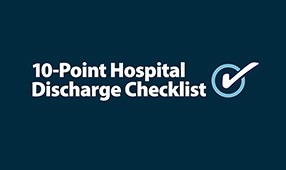Key takeaways
- Original Medicare consists of Part A hospitalization and Part B medical coverage.
- Part D covers prescription drugs and premiums vary by benefit plans and insurance companies.
- Part C, Medicare Advantage, can take the place of Original Medicare.
- Medicare Supplement insurance policies pay the 20% of charges that Parts A and B do not cover.
If you’re nearing 65, it’s time to start learning about how to enroll in Medicare. Or, if you’re already enrolled in Medicare and would like to change your coverage, open enrollment starts October 15 and ends December 7.
Medicare is divided into different parts, each with a letter identifier. Here’s a quick overview of what each part covers. Medicare.gov provides costs at a glance.
|
Medicare |
What it’s for |
What it costs |
|
Part A (Original Medicare) |
Hospitalization |
Premium-free for anyone who paid Medicare taxes through their employer for at least 10 years |
|
Part B (Original Medicare) |
Medical insurance for doctor’s visits and outpatient services |
Monthly premiums vary, depending on income |
|
Part C (Medicare Advantage) |
Hospitalization, medical services and prescription drugs, plus other health services |
Premiums and provider networks vary by plan and benefits provided |
|
Part D |
Prescription drugs |
Premiums vary by plan and benefits provided |
According to Marian Solomon, Senior Program Specialist with NEA Member Benefits, Original Medicare (Parts A and B) will cover approximately 80% of your hospital and medical expenses, so it can be helpful to have Medicare Supplement Insurance to help avoid high out-of-pocket expenses.
In 2021, you’ll have to pay a benefit-period deductible of $1,484 for Part A and a calendar-year deductible of $203 for Part B. But it can get more complicated than that depending on the length of a hospital stay and what type of facility you receive care in, among other factors. You can sort out all the variables at medicare.gov.
Supplementing your Parts A and B coverage
For some, paying the 20% that isn’t covered by Medicare isn’t an issue. But if you need help with those expenses or would feel more secure having insurance that helps cover the 20% Parts A and B coverage gap, there are a few ways to do this.
Medicare Supplement Insurance (Medigap)
Medigap policies are offered by private insurance companies and must follow Medicare guidelines. These policies supplement your Part A and Part B coverage by paying for the 20% those parts don’t cover. Medigap policies also may pay for the Parts A and B deductibles and copays. There are no provider networks as long as the provider accepts Medicare.
Policies come in 10 varieties, labeled A-D, F, G, K and L-N. Each lettered plan offers different benefit levels and premiums. However, because of changes in the law for covering the Part B deductible, Medigap plans C and F are not available to people new to Medicare as of January 1, 2020. If you were eligible for Medicare before that date but not enrolled, you may be able to buy one of these plans.
The NEA Retiree Health Program offers NEA members plans to supplement Medicare coverage.
Cover your drug costs with a Part D policy
If you stick with Original Medicare Parts A and B and want prescription drug coverage, you’ll need to purchase a Part D plan, whether you buy a Medigap policy or not. Like a Medigap policy, Part D insurance is offered by private insurance companies.
The plans vary in the drugs that are covered, deductibles and copays. Shop around to find a plan with the benefits you need at a price you can afford. Refer to Medicare.gov for more information and to explore plan options through their Plan Finder.
Medicare Advantage plans
Medicare Advantage Plans are “bundled” plans offered by private insurance companies that contract with Medicare. The plans provide all of your Part A and Part B benefits, and most provide prescription drug coverage. Most also cover vision, hearing and dental care, along with some health and wellness programs.
Aside from potential copays and deductibles, Advantage Plans generally are designed to cover 100% of your health care costs, although in certain cases, they may only cover 80%. If you join a Medicare Advantage Plan, you will continue to pay your Medicare Part B premium on top of your Advantage Plan premium, if there is one.
Not all Medicare Advantage Plans work the same way—some don’t charge monthly premiums depending on the coverages offered, and most have limited provider networks— so be sure to do your research.
Selecting Medicare plans
Health insurance is always a complicated subject. There are so many variables involved, and each one affects your benefits and your costs. As you can see, Medicare is no exception. The simplest option is to go with Original Medicare A and B. You’ll pay a monthly premium for Part B, and you’ll have deductibles and copays. And you’ll be on the hook for 20% of your health care costs.
Once you move beyond that basic coverage, you’ll need to shop around and do a lot of research. Get started by searching and comparing plans here.
Learn more about the options you have as an NEA member through the NEA Retiree Health Program.
And get additional tips on how to ensure a smooth transition to Medicare.












